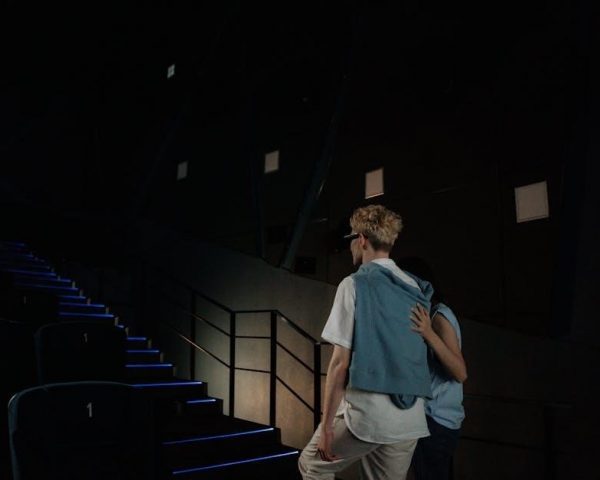Katawa Shoujo is a visual novel developed by Four Leaf Studios, offering a heartfelt story about Hisao Nakai, a student with a heart condition. The game explores his journey at a new school, where he meets five girls with unique disabilities. Players navigate emotional choices, shaping the narrative and relationships in this touching and thought-provoking experience.
1.1 What is Katawa Shoujo?
Katawa Shoujo is a visual novel developed by Four Leaf Studios, a group of international creators. The game focuses on storytelling and character development, following Hisao Nakai, a student with a heart condition, as he navigates life at a new school. Players interact with five girls, each with unique disabilities, exploring their stories and relationships. The game emphasizes emotional depth and player choice, allowing for multiple endings. Its thoughtful portrayal of characters with disabilities and its engaging narrative have made it a standout title in the visual novel genre.
1.2 Background and Development
Katawa Shoujo was conceptualized by an anonymous 4chan user in 2007, sparking an international collaborative effort. Four Leaf Studios formed to develop the game, blending diverse creative inputs. The visual novel was built using the Ren’Py engine, known for its accessibility. Development spanned five years, with a dedicated team of writers, artists, and musicians contributing to its creation. The game’s unique approach to storytelling and its focus on characters with disabilities set it apart, resulting in a critically acclaimed release in 2012. This collaborative spirit and dedication to meaningful storytelling define its development background.

Gameplay Overview
Katawa Shoujo is a visual novel where players read through the story and make choices that impact relationships and outcomes. The game features a standard visual novel format with text, character sprites, and backgrounds, allowing players to engage deeply with the narrative and its multiple endings.
2.1 Visual Novel Format
Katawa Shoujo is presented in a classic visual novel format, where players progress through the story by reading text accompanied by character sprites and detailed backgrounds. The game features a mix of dialogue, narration, and interactive choices that influence the story’s direction. Players can navigate through the narrative at their own pace, with the option to save and load progress. The visual novel format allows for deep immersion into the characters’ emotions and relationships, making the storytelling experience highly engaging. The format also emphasizes player agency, as key decisions can lead to different outcomes and endings, encouraging multiple playthroughs to explore all story paths.
2.2 Story Structure and Choices
Katawa Shoujo’s story is structured around Hisao Nakai’s journey after a heart attack leads him to a new school for students with disabilities. The narrative branches based on player decisions, offering multiple pathways. Early choices determine which girl’s route the player enters, with critical decisions influencing relationships and outcomes. The game emphasizes player agency, as even small interactions can alter the story’s trajectory. This branching structure creates a high replayability factor, encouraging players to explore different paths to uncover all possible endings and character backstories. The story’s depth lies in its ability to balance lighthearted moments with emotional complexity, making each route feel unique and impactful.

Main Characters
The story revolves around Hisao Nakai and five girls with unique disabilities: Emi, Hanako, Lilly, Rin, and Shizune. Each character’s distinct personality and challenges shape the narrative.

3.1 Hisao Nakai
Hisao Nakai is the protagonist of Katawa Shoujo, a high school student whose life takes a dramatic turn after a heart attack reveals a severe cardiac condition. Forced to transfer to Yamaku High School for students with disabilities, Hisao begins a journey of self-discovery and emotional growth. His calm and reserved nature allows players to project themselves onto him, making his interactions with the other characters deeply personal. Throughout the story, Hisao’s choices and reactions shape the relationships and outcomes, emphasizing the importance of empathy and understanding in overcoming life’s challenges.
3.2 Emi Ibarazaki
Emi Ibarazaki is one of the main characters in Katawa Shoujo, known for her vibrant personality and determination. A track star with prosthetic legs, Emi embodies resilience and positivity despite her physical disability. Her cheerful demeanor and energetic nature make her a standout character, often providing comic relief and emotional depth. Emi’s route explores themes of perseverance, trust, and understanding, as Hisao learns to appreciate her strength and vulnerability. Her story delves into the challenges of her past and her aspirations for the future, offering a compelling and heartfelt narrative that resonates with players.
3.3 Hanako Ikezawa
Hanako Ikezawa is a shy and delicate student at Yamaku High, known for her tragic past and quiet demeanor. She wears burns scars on her body, which have left her emotionally guarded. Hanako’s story in Katawa Shoujo revolves around her struggle to open up and trust others, particularly Hisao. Her route is deeply emotional, exploring themes of trauma, healing, and the power of human connection. Despite her reserved nature, Hanako’s character offers profound depth, allowing players to witness her gradual growth and vulnerability. Her narrative is both heartbreaking and uplifting, making her a memorable and impactful character in the game.
3.4 Lilly Satou
Lilly Satou is a kind-hearted and soft-spoken student at Yamaku High, who is also blind. Known for her calm demeanor, Lilly is a class representative and often serves as a voice of reason. Her story in Katawa Shoujo focuses on her gentle nature, her love for literature, and her deep sense of loyalty. Lilly’s route explores themes of trust, vulnerability, and the challenges of navigating the world without sight. Her relationship with Hisao develops slowly, emphasizing emotional connection and mutual understanding. Lilly’s presence in the game offers a serene and heartfelt experience, showcasing her strength and resilience despite her disability.
3.5 Rin Tezuka
Rin Tezuka is a calm, introspective artist at Yamaku High, known for her quiet nature and unique perspective on life. She is missing her arms below the elbows and uses prosthetics. Rin’s story explores her philosophical outlook, her passion for art, and her struggle to find meaning in her existence. Her route delves into themes of identity, purpose, and the complexities of human connection. Rin’s interactions with Hisao are often deep and thought-provoking, revealing her inner world and emotional depth. Her character adds a layer of philosophical inquiry to the game, making her route a memorable and impactful experience for players.
3.6 Shizune Hakamichi
Shizune Hakamichi is a vibrant and determined student at Yamaku High, known for her strong will and sharp wit. As the president of the student council, she is highly organized and passionate about her responsibilities. Shizune is deaf, which adds a unique dimension to her interactions, often relying on a mix of sign language and written communication. Her route explores themes of perseverance, leadership, and the challenges of connecting with others despite communication barriers. Shizune’s story is one of resilience and growth, offering a compelling narrative that highlights her strength and the depth of her emotions, making her a memorable character in the game.

Routes and Endings
Katawa Shoujo features multiple routes, each with unique endings influenced by player choices. The game offers a mix of emotional highs, lows, and unexpected twists, ensuring a memorable experience.
4.1 Unlocking Routes
Unlocking routes in Katawa Shoujo requires careful attention to dialogue choices and actions. Each girl’s path becomes accessible by making specific decisions during key moments in the story. Consistently showing interest in a character through conversations and interactions is crucial. Players must also complete certain events to progress along a chosen route. Flowcharts can help track decisions, but relying solely on them may detract from the immersive experience. Patience and multiple playthroughs are often necessary to explore all routes and endings, making the game highly replayable. Strategic saving and reloading can help optimize route progression and achieve desired outcomes.
4.2 Good and Bad Endings

Katawa Shoujo features multiple endings, including good, bad, and neutral outcomes, depending on the player’s choices. Good endings are achieved by consistently making decisions that align with the selected character’s route, showcasing emotional growth and understanding. Bad endings result from neglecting key moments or making harmful choices, often leading to heartbreaking consequences. The game’s narrative emphasizes the importance of empathy and responsibility, as Hisao’s actions directly impact the lives of those around him. Players must carefully navigate the story to unlock the most fulfilling conclusions, with multiple playthroughs required to experience all possible outcomes. The emotional depth of these endings is a hallmark of the game’s design.

Tips for Playing
Save frequently to avoid losing progress. Take time to understand each character’s personality and preferences. Be mindful of your choices, as they significantly impact the story’s outcome.
5.1 General Gameplay Tips
Saving frequently is crucial to avoid losing progress. Take time to read through each dialogue carefully, as the story is heavily narrative-driven. Engage with the characters by selecting responses that align with their personalities. Pay attention to key decision points, as they can lead to different routes. Use the in-game backlog feature to revisit previous scenes for context. Avoid rushing through the story; take your time to immerse yourself in the world and relationships. Remember, your choices shape the narrative, so consider their potential impact. This thoughtful approach will enhance your overall experience and help you fully appreciate the story’s depth.
5.2 Avoiding Bad Ends
To avoid bad ends in Katawa Shoujo, make thoughtful decisions that align with the characters’ emotions and needs. Avoid choices that could hurt or alienate them, as these often lead to negative outcomes. Save frequently before key decision points to experiment with different options. Pay close attention to dialogue cues, as certain responses may steer the story toward unfavorable conclusions. Be mindful of each girl’s specific sensitivities and preferences when interacting with them. By carefully considering your actions and their potential consequences, you can navigate the story more effectively and increase your chances of achieving a positive outcome.

Cultural Impact

Katawa Shoujo has left a lasting impact on the visual novel genre, praised for its heartfelt storytelling and realistic portrayal of characters with disabilities, challenging stereotypes and fostering empathy.
6.1 Reception and Popularity
Katawa Shoujo received widespread acclaim for its emotional depth and realistic portrayal of characters with disabilities, resonating deeply with players worldwide. Despite being a free release, it garnered significant attention for its thoughtful storytelling and relatable characters. The game’s ability to balance lighthearted moments with serious themes endeared it to fans, making it a standout title in the visual novel genre. Its popularity was further boosted by its accessibility, with fan translations in multiple languages. The game’s success lies in its ability to foster empathy and challenge stereotypes, leaving a lasting impression on players and inspiring community-driven content and discussions.
6.2 Influence on the Visual Novel Genre
Katawa Shoujo has left a significant mark on the visual novel genre, inspiring both developers and players with its heartfelt storytelling and diverse characters. Its success demonstrated the potential of indie-developed visual novels, encouraging more creators to explore niche themes and emotional depth. The game’s portrayal of characters with disabilities sparked meaningful conversations, challenging stereotypes and raising awareness. It also influenced the way developers approach character development, emphasizing authenticity and relatability. The game’s free release model and community-driven translations further highlighted the power of accessibility in reaching a global audience, making it a landmark title in the genre’s evolution.
Katawa Shoujo stands as a memorable visual novel that has resonated with players worldwide for its emotional depth and relatable characters. Its thoughtful portrayal of diverse experiences and disabilities has sparked meaningful conversations, leaving a lasting impact on the genre. The game’s accessibility, including its free release and community-driven translations, has made it a standout title. Players have praised its ability to balance heartfelt moments with realistic storytelling, making it a cherished experience. Katawa Shoujo’s influence continues to inspire developers, proving that storytelling can transcend boundaries and connect people on a deep level. It remains a testament to the power of visual novels to evoke emotions and foster understanding.


